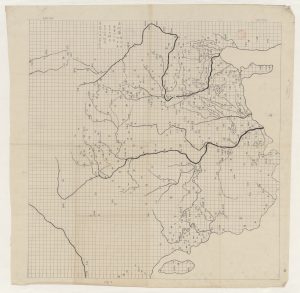This summer, I worked with Professor Michael Walsh on his project “China Reimagined: An Alternative History in Nine Parts.” While refining his first-year writing seminar “China Reimagined,” the project will also be expanded into a book that provides alternative perspectives of Chinese history than the more traditional chronologies.
The project is inspired by 洛書 (LuoShu), an ancient mystical chart that appeared from the Luo River in central China.
 the chart of 洛書 (LuoShu) after the Song dynasty
the chart of 洛書 (LuoShu) after the Song dynasty
Our primary task was to explore the concept of “China” through 9 themes, beginning with “territory” 國, which concentrates broadly on Chinese cosmology, and ending with “people”民.
The challenge of the project is that it’s impossible to give a comprehensive conclusion of what China is and who ‘counts’ as Chinese. We worked together to figure out the most appropriate nine themes for the book project and the appropriate Chinese and English titles for each topic. I also researched the etymology of relevant Chinese terms.
Besides tracing the history of LuoShu, I mainly worked to find primary and secondary resources in Chinese both in the library and online. Professor Walsh gave me much freedom to explore these topics and I found myself dwelling on some topics like “territory” and “city” while spending less time on others. I then translated, summarized, and annotated the information I found.
Yu Ji Tu (禹跡圖), 1136
 Book of Diverse Crafts (考工記), the image of the King’s city (王城圖)
Book of Diverse Crafts (考工記), the image of the King’s city (王城圖)
For me, it was also about learning the process of exploring academic research and about research material selection. Additionally, translating the texts was a surprisingly helpful way of learning. I found myself knowing a lot more than merely “reading through the words.” It almost feels like the 8 weeks of research just started yesterday. I want to thank Professor Walsh for making this a wonderful experience.

